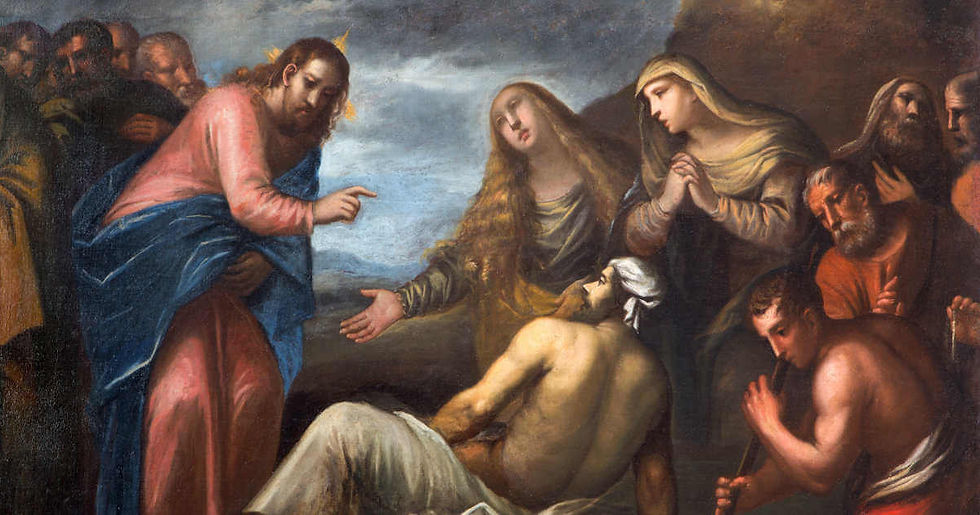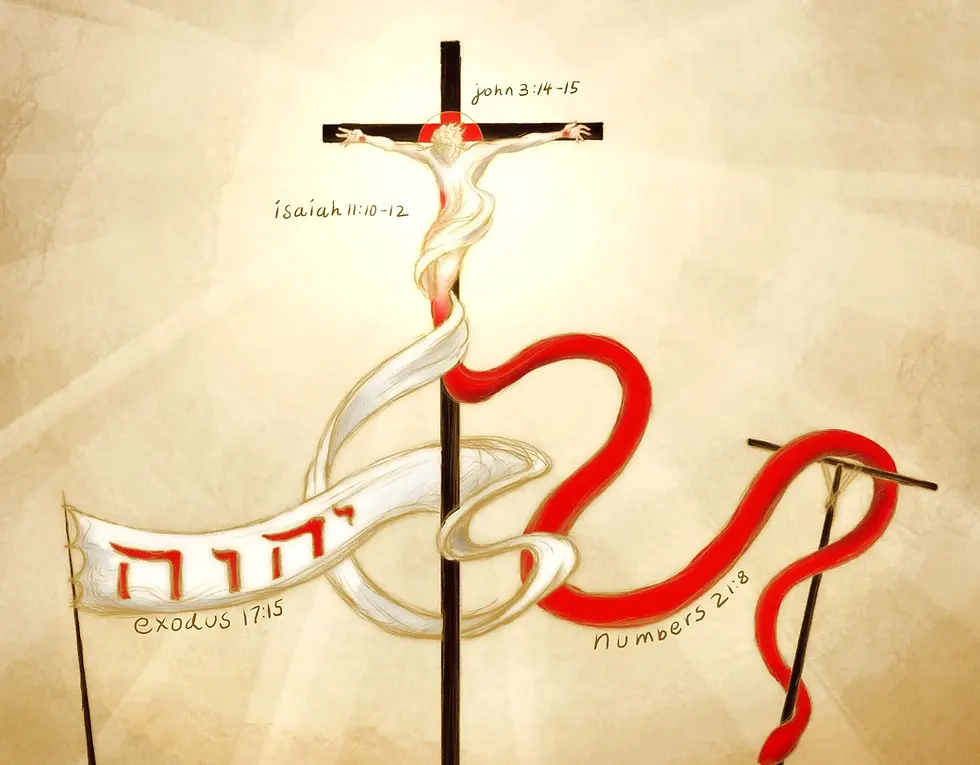Jesus Wept! Why?
- Charles
- 26 mars 2023
- 3 min de lecture
Reflections for the Fifth Sunday of Lent (Ezekiel 37:12-14, Romans 8:8-11, John 11:1-45)
“Jesus wept!”: this shortest verse in the Bible is perhaps also a puzzling one. Why would the Son of the Most High and the anointed Messiah weep? John provides us with ample indications to show that Jesus already knew he was going to rise Lazarus back to life. Jesus tells the messenger from Martha and Mary, “this illness is not to end in death”. He tells his disciples, “Our friend Lazarus is asleep, but I am going to awaken him”. He again states, “Lazarus has died. And I am glad for you that I was not there”. So if Jesus knew that he was soon going to deliver “the one whom he loves” (11:3) from the clutches of death, why would he weep?

Jesus weeps with us: He wept with Lazarus’ distraught sisters. When Martha and Mary hear the news of Jesus’ coming, they run to Jesus, fall at his feet and cry out the same words in agony, “Lord, if you had been here, my brother would not have died” (first Martha (11:21) and then Mary (11:32). If only you were here… if only you had come sooner… There is regret, anger, shock, and grief in their cries. When we encounter events and emotions that shake us to our very core, doesn’t this same blend of emotions overwhelm us? If only… What if… why? The tears of Jesus are signs of his participation in the pain of the sisters and the mourners! His tears are signs of his proximity, his presence, and his empathy with these distraught sisters!

We often think of God as a transcendent and distant ‘Spirit’ over and above human emotions and feelings, don’t we? The tears of Jesus paint a different picture. Here is a messiah, who cries with us! John notes that when Jesus saw her (and the Jews with her) weeping, “he was greatly disturbed in spirit and deeply moved” (11:33). Ezekiel, in today’s first reading, also talks of the closeness of the Lord GOD to His people in pain. He promises liberation, revival, and resettlement to those in graves, chains, and exile. Do we experience God’s closeness when we are overcome with our own “if only you were here” moments of loneliness and pain?
Jesus weeps for us: Jesus asks, “Where have you laid him?”, and they reply, “Sir, come and see”. The phrase “come and see” is significant to the Gospel of John, isn’t it? In the first chapter of John, this invitation occurs twice. Jesus tells the curious disciples of John the Baptist, “come and see” (1:39). Philip then says to Nathanael, the skeptic, “come and see” (1:46). “Come and see” is an invitation to the discovery and experience of the true identity of the person of Jesus. And now, at Lazarus’ tomb, humanity is inviting Jesus to the display of its puzzling reality: death. Martha summarizes the scene that awaits this “come and see” invitation, “Lord, by now there will be a stench; he has been dead for four days.”

In the second reading, Paul insists that we are not of the flesh for it is mortal and vulnerable to sin and death. This isn’t a pessimistic painting view of the human body. This is the first-century way of painting a fundamental truth about our human reality. Our bodies were created in the image and likeness of God. However, death has become an unfortunate but undeniable part of our human reality. Jesus stands at the entrance of the tomb, where his beloved friend is laid, and he is staring at the reality of death. Death is not the will of God for humanity. “He is not the God of the dead, but of the living” (Mark 12:27), and he sent His only Son “that we may have life, and have it in all its fulness” (John 10:10).
While staring at the reality of death which is on display in Lazarus’ tomb, Jesus is also staring at his own death. How? Because the rising of Jesus will become the last straw that breaks the camel’s back. As John notes, the news of the rising of Lazarus pushes the religious leaders over the edge and “from that day on they planned to kill him” (11:53). The rising of Lazarus paves the way to Jesus’ passion and that is why the liturgy invites us to reflect on this passage right before the Holy Week. However, death is not the final word! It shall become the door to life, resurrection, and salvation. The tomb cannot hold Lazar of Jesus forever! This Sunday, let us renew our experience of the closeness of our Saviour, who stands at the entrances of our tombs and prisons, weeping with us and for us, staring at the reality of death in the eye, ready to liberate us through his passion, death and resurrection.




Commentaires